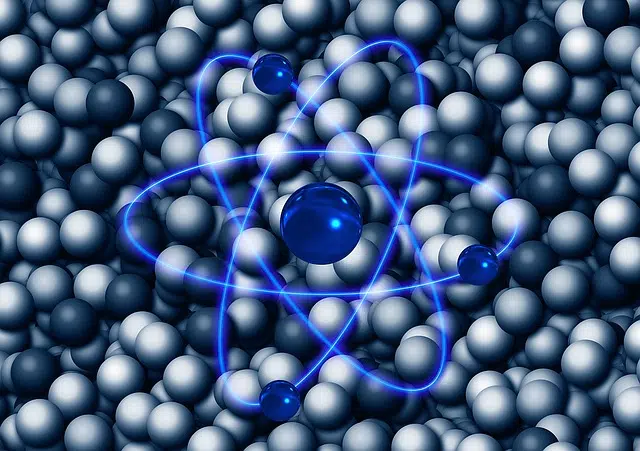
Electrons are essential particles that are part of atoms.
Before delving into defining the word electron, it is very important that we establish its etymological origin. Specifically, we can establish that it comes from the Greek term elektron which meant "amber."
The lightest essential particle that makes up an atom and that has the lowest possible charge in relation to negative electricity is known as an electron . It is a subatomic element that is located around the nucleus of the atom, made up of neutrons and protons .
Discovery of electrons
Electrons are responsible for establishing the attractions between atoms and produce, through their movement, electric current in most metals. They were noticed by the British physicist Joseph John Thomson ( 1856 – 1906 ), although their existence had already been postulated by the scientist George Johnstone Stoney ( 1826 – 1911 ).
The latter, a physicist and mathematician of Irish origin born in Oakley Park in 1826, is considered the person who coined the term electron. In addition to this fact, he has gone down in history as one of the most important scientists thanks to his work on the structure of matter and Avogadro's number, which earned him the prestigious Nobel Prize.

Electrons establish the attractions that exist between atoms.
Some features
The mass of the electron is about eighteen hundred times smaller than the mass of the proton. Although electrons are usually part of atoms, there are electrons that form beams in a vacuum or that move independently through matter. If electrons move outside the atom, they can generate a current of electricity.
Static charge , on the other hand, arises when the atoms of a body have a smaller or larger number of electrons than is needed to balance the positive charges of its nucleus. If the atom has fewer electrons, the body has a positive charge; If it has more, the charge will be negative.
The movement of electrons allows us to have electric current in our homes. Tube televisions that emit cathode rays are based, on the other hand, on a beam of electrons that is redirected by a magnetic field until it reaches the fluorescent screen. Semiconductors, electron microscopes, transistors , and soldering machines also use electrons.
Electrons and television
Although the concept we are addressing seems to us to be only a fundamental pillar of science, we have to be clear that this is not the case because it is a basic part of our daily lives. And precisely, as we have mentioned, thanks to electrons we have, for example, the possibility of enjoying television.
Specifically, these essential particles are one of the central axes around which the cathode ray tube rotates, which is what in the television is responsible for proceeding, through magnetic fields, to impact the fluorescent screen that gives us the images of the news. , movie or series that we are watching.
Very much in relation to the aforementioned television, we have to mention that the term in question obtained a leading role in a children's program on the small screen that was broadcast in the 80s and 90s in Spain. It was "The Crystal Ball" where characters called electroduendes, who were experts in electronics, entertained the little ones with their "cathodic" adventures.
